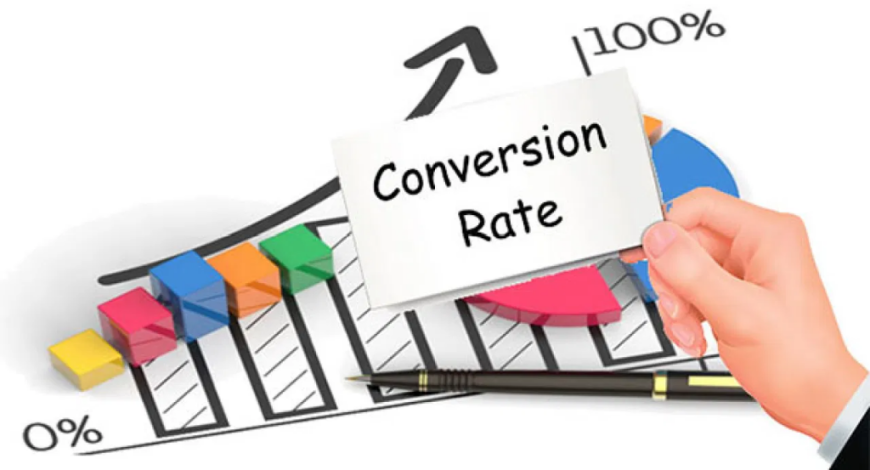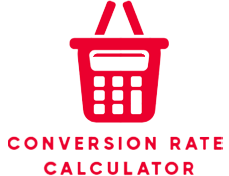Understanding how well visitors to your online store convert into paying customers is absolutely crucial when running an ecommerce business. That is where Purchase Conversion Rate comes into play.
I will outline exactly what a Purchase Conversion Rate is, its calculation method and significance as well as provide concrete examples to make things clear. So let’s dive right in!
What is Purchase Conversion Rate?
Purchase Conversion Rate is one of the key metrics for any online business selling products or services, measuring how many visitors actually complete a purchase on their website. Simply put: how many of your visitors actually buy something? Essentially, it measures what percentage of all visits end in sales on your website. It serves as one of the key measures of online business performance.
Many ecommerce owners use tools like a sale conversion rate calculator to quickly determine their performance without manual calculations, helping them focus more on optimizing their store for better results.
An impressive conversion rate typically indicates that your website, product offering, and user experience are all working in harmony; conversely, an insufficient conversion rate might signal that there’s something amiss that requires attention.
Why is Purchase Conversion Rate Important?
Here’s why businesses obsess over it:
- It tells you if your website is effective.
- It highlights how well your marketing is performing.
- It helps you optimize your sales funnel.
- Higher conversion = more revenue without increasing traffic.
Basically, improving your conversion rate is like making more money without spending more on ads or SEO.
Pretty sweet, right?
The Formula for Purchase Conversion Rate
Here’s the simple formula you need:
Purchase Conversion Rate (%) = (Number of Purchases / Number of Visitors) × 100
That’s it!
You divide the number of people who made a purchase by the total number of visitors, then multiply by 100 to get a percentage.
Example of Calculating Purchase Conversion Rate
Let’s say:
- Your website had 5,000 visitors last month.
- You made 200 sales.
Now, plug those numbers into the formula:
Purchase Conversion Rate=(200/5000)×100=4%
Your Purchase Conversion Rate is 4%.
In simple words: 4 out of every 100 visitors bought something.
What is a Good Purchase Conversion Rate?
It really depends on your industry, but generally:
| Industry | Average Purchase Conversion Rate |
| E-commerce | 2% – 4% |
| SaaS | 3% – 5% |
| Luxury Goods | 1% – 2% |
| Digital Products | 4% – 8% |
If your rate is below average, don’t worry!
Most businesses have plenty of room to optimize and grow.
How to Track Your Purchase Conversion Rate
Here are some tools you can use to track it automatically:
- Google Analytics (set up Goals or E-commerce Tracking)
- Shopify Analytics
- WooCommerce Reports
- Klaviyo or other marketing platforms
If you’re using Google Analytics 4 (GA4), you can set up a purchase event and monitor it easily.
Tips to Improve Your Purchase Conversion Rate
If you want to see that percentage climb, here are a few quick wins:
- Simplify your checkout process. (Fewer steps = fewer drop-offs.)
- Offer free shipping. (Huge conversion booster.)
- Display customer reviews and testimonials.
- Use high-quality product photos and videos.
- Offer limited-time promotions.
- Optimize your mobile experience.
- Make returns and refunds easy.
Even a small improvement in conversion rate can lead to big increases in your overall revenue.
Final Thoughts
Calculating Your Purchase Conversion Rate Can Be Powerful Learning where your company currently stands allows you to start making smart decisions to expand it further in the future. Don’t forget: it all begins here!
Not just getting more traffic; making the most out of what traffic there already is is key to growth. Start tracking, stay consistent, and test improvements – your bottom line will thank you!
Quick Recap:
- Formula: (Purchases ÷ Visitors) × 100
- Example: (200 purchases ÷ 5000 visitors) × 100 = 4%
- Tools: Google Analytics, Shopify, WooCommerce
- Tip: Focus on user experience, trust, and simple checkouts.


